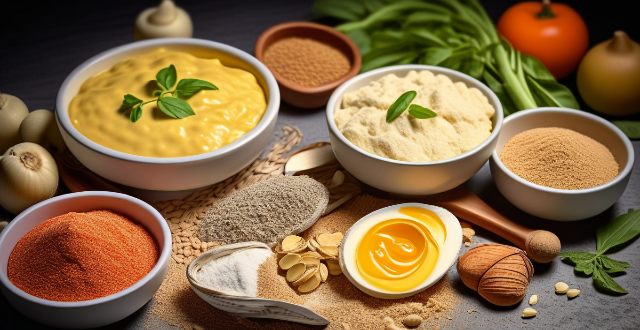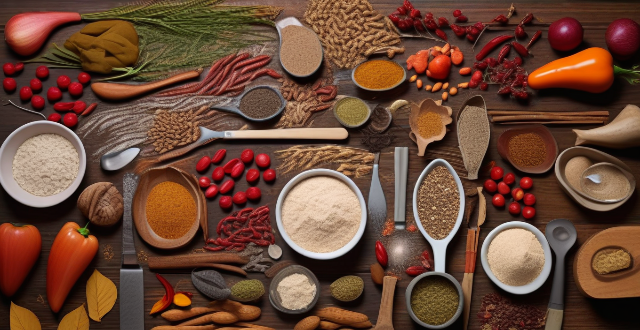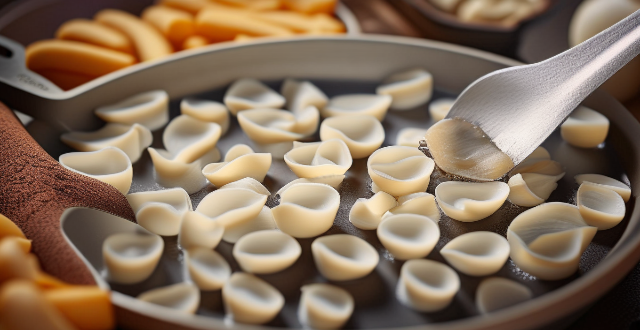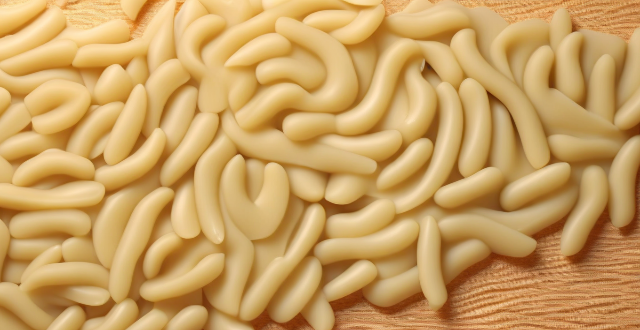Add Indian

How do I make a traditional Indian curry at home ?
How to Make a Traditional Indian Curry at Home Indian curry is a flavorful and aromatic dish that can be made with various vegetables, meats, or legumes. Here's a step-by-step guide to making a traditional Indian curry at home: Ingredients: - 2 tablespoons vegetable oil - 1 onion, finely chopped - 2 garlic cloves, minced - 1 tablespoon grated fresh ginger - 2 teaspoons ground cumin - 1 teaspoon ground coriander - 1 teaspoon turmeric powder - 1 teaspoon paprika - 1 teaspoon salt - 1 can (14 ounces) diced tomatoes - 1 can (14 ounces) coconut milk - 1 pound chicken breasts or thighs, cut into bite-sized pieces - Fresh cilantro leaves, chopped (optional) Instructions: Step 1: Heat the Oil Heat the vegetable oil in a large skillet over medium heat. Step 2: Sauté the Onion Add the chopped onion to the skillet and cook until it becomes translucent, stirring occasionally. This should take about 5 minutes. Step 3: Add Garlic and Ginger Stir in the minced garlic and grated ginger and cook for another minute until fragrant. Step 4: Add Spices Add the ground cumin, ground coriander, turmeric powder, paprika, and salt to the skillet. Stir well to combine with the onion mixture. Cook for about 30 seconds until the spices are fragrant. Step 5: Add Tomatoes and Coconut Milk Pour in the can of diced tomatoes and coconut milk into the skillet. Stir well to combine all the ingredients. Bring the mixture to a simmer. Step 6: Add Chicken Add the bite-sized pieces of chicken to the skillet. Stir well to coat the chicken with the sauce. Cover the skillet with a lid and let it simmer for about 20 minutes or until the chicken is cooked through. Step 7: Garnish with Cilantro (Optional) Once the chicken is cooked, remove the skillet from heat and sprinkle some fresh cilantro leaves on top of the curry if desired. Your traditional Indian curry is now ready to serve! Enjoy it with rice or naan bread for a complete meal.

What are the key ingredients in Indian cooking ?
Indian cuisine is known for its rich flavors and diverse dishes. The key ingredients that make Indian cooking unique are spices, herbs, ghee, lentils, rice, yogurt, nuts and seeds, and bread. These ingredients add flavor, color, and aroma to the dishes and create authentic and delicious Indian cuisine.

Can you recommend a good Indian restaurant in my city ?
This text provides recommendations for Indian restaurants in the city and offers tips for choosing one. The author suggests five different restaurants, each with its own unique offerings such as authentic North Indian cuisine, spicy South Indian delicacies, street food snacks, fine dining options, and family-friendly menus. The author also advises readers to consider factors like authenticity, variety, atmosphere, and service when selecting an Indian restaurant.

Can vegetarians enjoy a variety of Indian food ?
Vegetarians can enjoy a variety of Indian food due to the country's diverse cuisine and common dietary choice. Traditional vegetarian dishes like Chana Masala and Palak Paneer offer delicious options, while regional variations such as South Indian Dosas and Gujarati Thali provide unique flavors. Street food also presents numerous vegetarian choices like Pani Puri and Vada Pav. Additionally, global influence has led to more vegetarian versions of classic dishes in restaurants worldwide.

How has Indian cuisine evolved over time ?
The evolution of Indian cuisine is a result of various factors such as geography, climate, history, culture, and trade. India's diverse geography and climate have led to unique culinary traditions in each region, with coastal areas known for seafood dishes and northern plains famous for dairy products and bread. Historical influences like the Mughal era and British colonial period have also shaped Indian cuisine, introducing fusion dishes and bakeries. Trade routes and globalization have integrated foreign flavors into Indian dishes, while regional variations highlight the country's culinary diversity. Modern innovations include fusion dishes and healthier versions of traditional recipes. Overall, Indian cuisine reflects the nation's rich cultural diversity and adaptability to changing trends.

What are some common misconceptions about Indian food ?
Indian cuisine is known for its rich flavors, spices, and diverse range of dishes, but there are several misconceptions about Indian food that people often believe. Here are some of the most common misconceptions: 1. All Indian food is spicy: Many Indian dishes do use a variety of spices, but not all of them are spicy. There are plenty of mild and sweet dishes in Indian cuisine as well. 2. Indian food is only vegetarian: While vegetarianism is prevalent in India, there are plenty of non-vegetarian dishes as well, such as Butter Chicken, Chicken Tikka Masala, and Lamb Curry. 3. Indian food is always greasy: Some dishes may be fried or cooked with ghee (clarified butter), but there are plenty of healthy options available as well. Many Indian households prepare dishes using fresh vegetables, lentils, and whole grains, which are both nutritious and delicious. 4. Indian food is expensive: Some people assume that Indian food is expensive because it uses exotic spices and ingredients. However, many Indian dishes can be made with affordable ingredients that are easily available in local markets. 5. Indian food takes a long time to cook: While some dishes may require longer cooking times, many others can be prepared quickly and easily. Dishes like Chana Masala, Palak Paneer, and Aloo Gobi can be cooked within 30 minutes or less. By understanding these myths and exploring the diversity of Indian cuisine, one can appreciate the richness and complexity of this unique culinary tradition.

What is the significance of spices in Indian cooking ?
The significance of spices in Indian cooking is multifaceted, encompassing flavor enhancement, cultural traditions, and medicinal benefits. Key spices like turmeric, cumin, coriander, mustard seeds, fenugreek, red chili powder, garam masala, curry leaves, asafoetida, and tamarind contribute to the complex flavor profiles characteristic of Indian cuisine. These spices are used through techniques such as tempering, grinding, and roasting to create a balance of tastes and visual appeal. Historically, spices were valuable commodities in trade and are integral to traditional medicine and religious practices. Regional variations in spice use reflect India's diverse geography and cultural heritage. Understanding the nuances of spice usage allows for a deeper appreciation of the artistry behind Indian dishes.

Is Indian food spicy ?
The text discusses the spiciness of Indian food, explaining that it varies greatly depending on several factors such as regional variations, personal preferences, specific dish characteristics, ingredients contributing to spiciness, and cultural considerations. It notes that some dishes can be very spicy while others may be mild or even sweet, and suggests asking for a milder version or specifying preferences when ordering if one has a low tolerance for spice.

What are some popular Indian dishes ?
Popular Indian dishes include Biryani, Chole Bhature, Dal Makhani, Dosa, Samosa, Tandoori Chicken, and Vada Pav. These dishes showcase the rich flavors, diverse ingredients, and vibrant colors of Indian cuisine.

How do I add a new card to Apple Pay ?
Adding a new card to Apple Pay is a simple process that involves opening the Wallet app on your iPhone or iPad, selecting the card type, adding card details, verifying your information, agreeing to terms and conditions, setting up contactless payment options, and completing the process. On Apple Watch, you need to open the Apple Watch app, add a card to Apple Pay, enter card details, verify your information, agree to terms and conditions, and complete the process. The steps may vary depending on your card issuer, but once completed, your new card will be added to Apple Pay and ready for use.

How can I add a personal touch to my Thanksgiving celebration ?
How to add a personal touch to your Thanksgiving celebration, including decorating with meaningful items, personalizing table settings, cooking or baking with love, incorporating family traditions, creating a cozy atmosphere, and showing gratitude.

What are the most popular vegetarian dinner recipes ?
Vegetarian dinner recipes have become increasingly popular in recent years as people are looking for healthier and more sustainable food options. Here are some of the most popular vegetarian dinner recipes: 1. Lentil Soup: A hearty and filling meal that is perfect for colder months, packed with protein, fiber, and nutrients. 2. Chickpea Curry: A flavorful and satisfying dish that is easy to make, perfect for those who love Indian cuisine. 3. Roasted Vegetable Quinoa Bowl: A healthy and colorful meal that is perfect for meal prep, packed with vegetables, protein, and fiber.

What are some creative dinner recipes that use leftover chicken or turkey ?
Using leftover chicken or turkey is a great way to save time and money while still enjoying delicious and creative meals. Here are some recipe ideas that will help you transform your leftover poultry into something new and exciting. Chicken or Turkey Salad Sandwiches: Toss the shredded chicken or turkey with your favorite dressing, then assemble the sandwich by layering mixed greens, tomatoes, red onion, and the dressed chicken or turkey on whole grain bread. Enjoy as a light lunch or dinner option. Chicken or Turkey Stir-Fry: Heat oil in a wok or large skillet over medium-high heat, add garlic and ginger, stirring quickly until fragrant. Add vegetables and cook until they begin to soften. Add cubed chicken or turkey and continue to stir-fry. Season with soy sauce and serve over rice or noodles for a complete meal. Chicken or Turkey Enchiladas: Preheat oven to 350°F (175°C). Warm tortillas in the oven or microwave until pliable. Combine shredded chicken or turkey with cheese, onions, and black beans if desired. Spoon the mixture onto each tortilla and roll tightly. Place enchiladas in a baking dish and cover with enchilada sauce. Top with additional cheese and bake for 20-25 minutes until heated through and cheese is melted. Serve with salsa and enjoy!

How do I cook perfect al dente pasta at home ?
To cook al dente pasta, start by selecting a high-quality pasta and filling a large pot with water. Add salt and bring the water to a boil. Once boiling, add the pasta and stir immediately. Check for doneness frequently and drain as soon as it reaches the desired consistency. Serve immediately or reserve for later use. Tips include undercooking slightly, saving some pasta water, avoiding overcrowding the pot, and using a timer to remind yourself to check for doneness.

How do celebrities accessorize their outfits for award shows ?
Celebrities accessorize their outfits for award shows with jewelry, bags, shoes, and other items to make a statement on the red carpet. They choose pieces that complement their outfits and add a touch of glamour. Popular jewelry choices include statement necklaces, earrings, bracelets, and rings. Bags can be clutch bags, tote bags, or minaudieres. Shoes can be high heels, flats, or boots. Other accessories such as hats, scarves, belts, and sunglasses can add personality and flair to an outfit.

Are there any specific colors or patterns that are more suitable for women's office attire ?
When it comes to office attire, women often have a wide range of options to choose from. However, certain colors and patterns are considered more suitable than others for a professional environment. Neutral colors such as black, gray, navy blue, and beige are classic choices that are versatile and professional-looking. Pastels such as light pink, baby blue, and lavender can add a touch of color without being too bold or distracting. Bright colors such as red, orange, and yellow should be used sparingly and balanced with neutrals or other muted tones. When it comes to patterns, stripes, florals, and polka dots are all classic choices that can add visual interest to an outfit while still maintaining a professional appearance.

How to accessorize your sportswear for a chic look ?
Accessorizing your sportswear can be a fun and creative way to elevate your outfit from basic to chic. Here are some tips on how to achieve that stylish look: 1. Start with the Basics: Invest in quality sportswear pieces that fit well and are comfortable to move in. Stick to neutral colors like black, white, or gray so that you can easily mix and match accessories. 2. Add a Pop of Color: Incorporate colorful accessories like a brightly colored scarf, hat, or shoes to draw attention and make your overall look more interesting. 3. Layer Up: Layering is key when it comes to accessorizing your sportswear. Start with a base layer like a tank top or t-shirt, then add a jacket or cardigan on top. Experiment with different textures like denim, leather, or fur. Remember not to go overboard – less is often more when it comes to layering. 4. Choose the Right Footwear: Your footwear can make or break your sportswear ensemble. Opt for sneakers or slip-ons that complement your outfit without stealing the show. If you want to add some height, try a pair of ankle boots or heels. Just make sure they're comfortable enough for any physical activities you might engage in. 5. Don't Forget the Details: Finally, don't forget about the little details that can really pull together your look. A statement necklace, bold earrings, or a trendy belt can all add that extra touch of chicness to your sportswear. Just be careful not to overdo it – one or two standout accessories should do the trick.

How do I make vegetarian versions of classic comfort foods ?
Vegetarian versions of classic comfort foods can be just as satisfying and delicious as their meat-based counterparts. Here are some tips on how to make vegetarian versions of classic comfort foods: 1. Start with a hearty base like lentils, beans, or tofu. 2. Add rich flavors like cheese, cream, or butter. 3. Use spices and herbs for depth and complexity. 4. Get creative with grains like rice, quinoa, or pasta. 5. Incorporate vegetables by roasting, sautéing, or adding raw to salads. 6. Try meat alternatives like plant-based burgers, sausages, and bacon. 7. Experiment with different cuisines for new and exciting ways to enjoy your favorite comfort foods without meat.

How can I use bitters to enhance my cocktail recipes ?
Bitters are a crucial ingredient in many cocktails, adding depth and complexity to the flavors. Here's how you can use them to enhance your cocktail recipes: Understanding Bitters: Bitters are concentrated alcoholic extracts made from herbs, spices, fruits, and other botanicals. They are typically used in small amounts to add a subtle, aromatic flavor to cocktails. There are several types of bitters available, each with its own unique flavor profile. Using Bitters in Cocktails: Here are some tips for using bitters in your cocktail recipes: start small, experiment with flavor combinations, use as a garnish, and create your own bitters. Overall, using bitters is an easy way to elevate your cocktail game and create unique, complex flavors that will impress your guests.